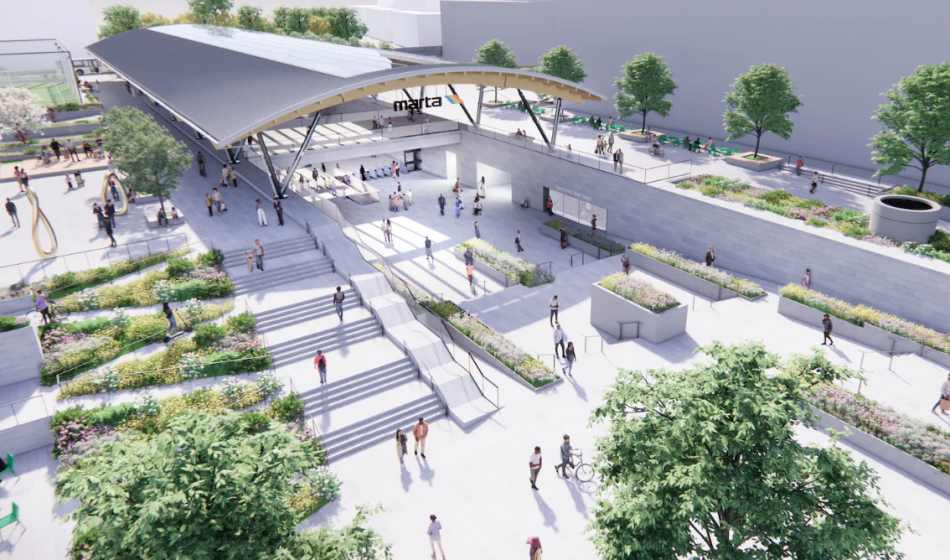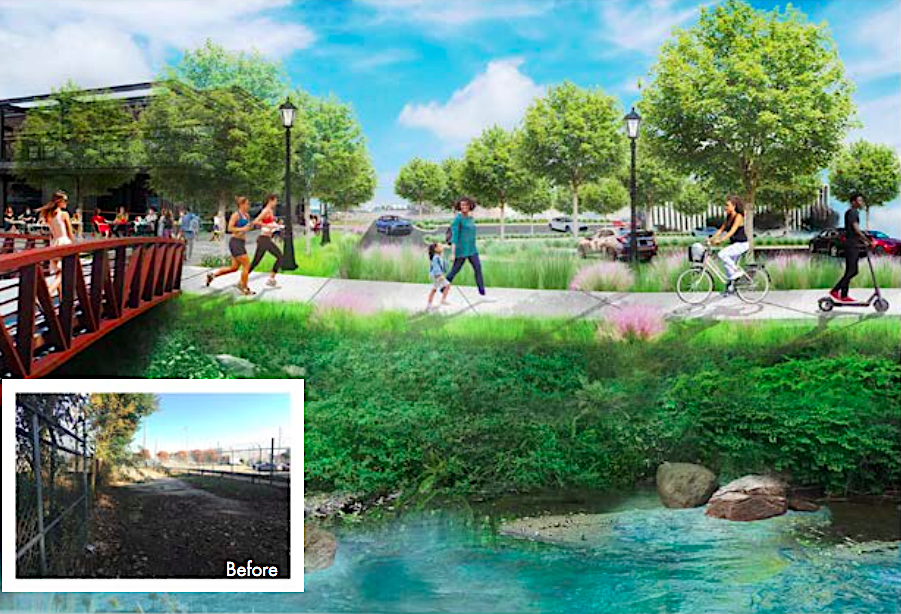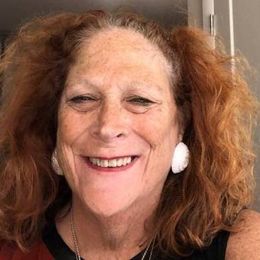Abstract:
Aging is an especially complicated process for Black LGBTQ elders who have faced relentless and lifelong racism and homophobia. Despite changes in public sentiment, race, sexuality, and sexual identity continue to influence personal and public responses to their needs as stigma stands as a formidable barrier to access to services. This article is a discussion of how sexuality introduces infrequently addressed levels of complexity to their lives, and it is a call to action in the hopes that data and social analyses will empower grassroots activism that will garner positive change for LGBTQ elders, especially Black elders.
Key Words:
LGBTQ aging, Black LGBTQ elders, racism, oppression, homophobia
The challenges of growing older for LGBTQ people are many and tremendous. My expedition through aging is shaped by a strident, multidimensional, and, at times, perplexing identity: Black lesbian medical anthropologist activist pastor. This journey has become at once daunting and delightful, challenging and comforting. It is overwhelming and pleasant to have simply lived more than 7 decades.
Growing up, it seemed normal to imagine aging as mirroring the experiences of my parents and grandparents. I expected my hair to turn gray and my eyesight to diminish. My body would become less flexible, my hearing would weaken, and life would be a constant dance of avoiding or surviving the many chronic illnesses hiding in the shadows.
For some reason, it never occurred to me that sexuality could be a significant factor for a woman of a certain age. For some reason, I believed there was a point at which life leveled off, and breathing was all that mattered. Part of me somehow expected to outgrow my gay self and just be my old self. Imagine my surprise to learn that aging was just one more coming-out adventure, yet another journey through the pathways of oppression I had navigated in my life since birth.
There is a growing body of data on how sexuality and sexual identity obscure aging and shape public understanding and empathy. As a scholar, I wanted—no, needed—to trust the data; I wanted to live with hope and proudly march toward transformation and health. How could life be otherwise? Everyone likes old people, and, at least in theory, everyone wants the best for individuals who remind them of their grandparents.
But in reality, the data collected using anthropological observation and participation methods reveal how little changes for LGBTQ older adults, especially Black LGBTQ elders. At the end of the day, understanding and empathy rarely go beyond an academic conversation. This article discusses a dimension of aging for the LGBTQ folks who fell through the cracks in the data. It illustrates the great dangers inherent in public policies steeped more in data than in lived experiences and offers a few potential responses.
Many Black LGBTQ people do not know the data and how it can carry them down a path into aging that differs from the journey they have been familiar with all of their lives. I hope the information discussed here will somehow breathe new perspectives into existing responses to data and influence a different articulation of and inquiry into aging.
Coming Out Old
For most LGBTQ people, coming out is a never-ending, revolving-door experience. It begins before puberty with questions and continues through complex contradictions appearing at every developmental juncture. At first, it is about coming out to oneself, noticing something different emerging from a place of mystery and confusion. Why am I attracted to her while my girlfriends are swooning over him? Why does it feel so good when he brushes against me on the basketball court while the other guys push him away? Why don’t I want to dance with her or marry him? Most of all, why do I feel wrong, broken, and misplaced all the time?
Then, at some point, words emerge to give life meaning. It becomes painfully apparent that there is a label for what you have felt for so long, and the world can now call you something other than strange. Lesbian. Gay. Bisexual. Transgender. Queer.
Although life becomes a cacophony of joys and sorrows, victories and defeats, knowing what to call yourself brings a kind of comfort to LGBTQ people that is at once harsh and consoling. They can cautiously move and rejoice as public awareness and acceptance evolve. Progressive and liberal sensibilities surface as trendy acceptances of all things different.
‘Part of me somehow expected to outgrow my gay self and just be my old self.’
With the turn of the century came a shift in attitudes about who and what people were born to be, and coming out, while still challenging, became fashionable, almost a requirement for invitations to parties, churches, and public demonstrations against all categories of injustice. Pathways obstructed by ignorance and discrimination gradually cleared, and opportunities for disclosure and open expressions of sexuality and sexual identity expanded.
It has been said that growing old is not for the faint of heart. There is no better representation of this sentiment than LGBTQ older adults of the 21st century. This Baby Boomer generation has lived through a whirlwind of contradictions, conflicts, and circumstances like no other group before them. They emerged into an American Dream that was advancing as a strict ethos of heterosexuality; the ideal family was a husband who provides, a wife who produces, and children who obey. Few imagined that the rights and privileges LGBTQ people enjoy today would have been possible during their lifetimes.
There has been no other point in history when LGBTQ persons could be such visible contributors to the making of America, no more significant example of a social contract honored. Then life happens again, and the angst of childhood returns with the realization that the circle of life is closing in. According to the U.S. Census Bureau (2016), more than 2 million LGBTQ people are ages 50 or older, 1.1 million are ages 65 or older, 20% are people of color, and there are more than 1.2 million African-American LGBTQ persons.
As with other marginalized groups, LGBTQ people are disproportionately affected by social determinants of health. One-third of the LGBTQ population live at or below 200% of the federal poverty level, among which 40% are African American, 40% are Latinx, and 48% are transgender individuals (U.S. Census Bureau, 2016). Almost one-third of LGBTQ adults older than age 65 live at or below 200% of the federal poverty level (Emlet, 2016).
Coming Out Old, Black, and Unhealthy
Colin (the names and geographic locations have been changed in all subjects) is a 73-year-old Black gay man who grew up in the South. His family loved him but found his feminine demeanor embarrassing and contradictory to their strong Baptist values. After graduating from high school, he left Georgia to escape the constant ridicule and violence against his sexuality. He credits surviving the blatant racism of the South with giving him the stamina to withstand homophobia.
He worked as a home health aide for more 25 years in several cities, finally settling down in the Midwest. At age 58, he was diagnosed with prostate cancer but could still work part-time. He had been estranged from his family for many years because of his sexuality. Although he had built an alternative LGBTQ family, many of his closest friends had died from HIV. Those who escaped HIV began dying from or being crippled by the ordinary illnesses of aging.
A year after recovering from cancer, he was diagnosed with diabetes and advanced osteoarthritis and had to live on Social Security Disability Insurance. The decreased income required him to move to a low-income apartment for older adults. He was unable to go to bars, which had been his only social outlet for most of his life, and felt awkward participating in the social activities offered at the apartment complex.
Nothing in his experience as a Black gay man who once danced into the wee hours of the morning made playing Bingo and Mah Jong interesting. He began drinking alone more often, which exacerbated his illnesses. His only connection with any kind of community was through online chat sites. After being scammed a couple of times by men he met online, he gave up and just sat in his apartment watching television, becoming more depressed and incapacitated.
Services and Advocacy for GLBT Elders (SAGE), the largest and oldest organization dedicated to supporting and empowering LGBTQ older adults, highlights three areas in which the impact of sexuality is especially significant for LGBTQ elders. The first is the overall effect of discrimination. This is particularly poignant for Black elders who, like Colin, have faced racial inequalities from birth. It has been reported that Black LGBTQ older adults are discriminated against because of their sexuality more frequently than are older Whites. They also have lower incomes and educational attainment, less social support, and higher levels of sexuality-related stigma (Kim et al., 2017).
‘He credits surviving the blatant racism of the South with giving him the stamina to withstand homophobia.’
The second area that impacts LGBTQ older adults identified by SAGE is their need to create a family of choice. Due to familial rejection and legalized discrimination, their reliance upon chosen family creates social isolation and vulnerability for LGBT elders. Research reveals that LGBTQ people are more likely to not be in relationships, to live alone, and to have fewer support systems, such as children and relatives. The third area of impact reported by SAGE is that LGBTQ older adults are at increased risk for health problems, including smoking, obesity, alcohol abuse, mental illness, and HIV infection.
These infirmities are more severe due to discrimination and social isolation. Infectious diseases and other health problems present especially onerous situations for older adults in general. Wallace and colleagues (2011) found that LGBTQ older adults had poorer overall health than did their heterosexual peers. According to the Centers for Disease Control and Prevention, almost 9 in 10 deaths from COVID-19 were among persons older than age 65, and more than 70% of those who died from flu-related deaths were older adults (Tejada-Vera & Kramarow, 2022). When a lifetime of racial discrimination is accompanied by a second tier grounded in sexuality, inequities in healthcare take on a new dimension for Black LGBTQ elders, and disparities in mental and physical health abound.
Coming Out Old, Black, and with HIV
Michael, a 65-year-old Black gay man living in Florida, was diagnosed with HIV in 1981, just as the disease debuted. He can’t remember how he contracted the virus. He only remembers feeling fear and shame, waking up each day surprised to still be alive. Medication has prolonged his life and enabled him to survive. Homophobia, both expressed by the public and internalized, prevented him from having a decent job, living in a safe environment, or getting an education.
He had grown up working with his father on a farm in the South and had become quite good at yard work. Before being diagnosed with HIV, he was able to secure a job on the landscape crew at a university, which provided him with a steady paycheck and health benefits. When Michael was first infected, the lack of treatment options crippled his body and deadened his spirit, and for years he was unable to work.
However, Anti-Retroviral Therapy strengthened his body to a point where he could supplement his Supplemental Security Income by doing landscaping jobs on the side and off the books. As Michael ages, however, he deals with multiple comorbidities. He has had two heart attacks, resulting in heart stents and daily cholesterol medication. Many of his friends have died from HIV, including those who managed to survive the disease for years. He smokes marijuana and drinks alcohol excessively. He moved back to live with his family in the South when rising costs made living in Seattle impossible. The healthcare system in Florida is markedly different for persons with HIV, but he gets around that by not reporting his move. He has a friend who picks up his medications and regularly mails them to him, but he lives in constant fear that his scheme will be uncovered or his health will worsen. He receives Social Security, food stamps, and a small stipend from his old job. It’s just enough to help with groceries and buy enough beer and marijuana to fill the gaps in his life.
Now, Michael just cuts grass. Every morning, he wakes up hoping that a neighbor will call and need him to help make their yard pretty or ask his advice about how to get more vegetables and fewer weeds. If no one calls, he works in his yard, trying to do whatever he can to give life meaning, just for one more day. Maybe he can make that avocado tree stop losing leaves or figure out how to keep the rats from eating his tomatoes. Maybe this or perhaps that. His life has become a saga of isolation and despair shared by many other Black gay men.
Since the disease first surfaced, Black people have been most disproportionately affected by HIV. This remains the case, with Blacks accounting for 40% of new diagnoses in 2021 (Centers for Disease Control and Prevention, 2022). Although antiretroviral medications have enabled persons with HIV to live longer, the disease exacerbates the burdens that already challenge Black LGBTQ people. Most were infected during their youth or in middle age. The preexisting robust and blatant racism and homophobia, coupled with HIV stigma, make life even more catastrophic. For many, just when it was almost safe to come out as a homosexual, HIV appeared to drive them deeper into new and unexpected closets of shame and hopelessness.
Coming Out Old and Female
Margaret and Phylis met at a neighborhood card party in their 20s and became good friends. Eventually, they decided to come out as lesbians and build a life together. Margaret worked as a housekeeper in a hotel in Detroit for more than 32 years, until it closed due to the area’s financial distress. She received a modest settlement and a small pension check every month.
Phylis worked on the production line at an automobile factory until she retired after 30 years with a generous pension and retirement savings. Throughout their relationship, Phylis had taken charge of everything; she managed their financial and social lives. Because of income and credit ratings differences, everything had been purchased in her name. Margaret suffered from hypertension most of her life and had severe back problems from years of working as a maid. For the most part, however, life had been pleasant for more than 40 years. They bought a small house together, frequently hosted parties, took vacations every year with a small circle of LGBTQ friends, and had a few supportive family members.
Things changed drastically when Phylis was suddenly killed in an automobile accident. The day after her funeral, her family appeared at the door to take possession of everything Phylis and Margaret had worked so hard to build together. Margaret had no legal standing because they were not married. She was given a month to pack her things and find somewhere else to live. With the help of a sympathetic lawyer, Margaret received a small settlement, which was enough to rent an apartment in a senior complex. She was also allowed to keep some of their furniture and mementos from their relationship.
‘Aging for Black LGBTQ adults living on low or limited incomes is merely a continuation of the multilayered oppression they have always experienced.’
Unlike Phylis, she had no family and considered their friends to be her adopted family. However, she was embarrassed by her losses and became distant from those friends. At age 67, she found herself alone and having to start over again with very few resources.
Fredriksen-Goldsen and colleagues (2013a) analyzed data from the 2003–2010 Washington State Behavioral Risk Factor Surveillance System (BRFSS) on health outcomes and chronic conditions. They reported significant differences in the chances of older lesbians and bisexual women becoming disabled and having mental health challenges compared to heterosexual women and having greater odds of obesity. Also, it was determined that older lesbians are more likely to drink excessively and smoke than heterosexual women.
Coming Out Old and Uninformed
Standing under the umbrella of trendy gayness, LGBTQ older adults must face the potentially crippling challenge of coming out while old. There is a growing mountain of academic articles and reports on aging replete with stories similar to those mentioned here. Primarily they include accounts of how things are bad but improving, highlighting this program or that policy to offer direction and hope for LGBTQ older adults. Alas, this information rarely trickles down to those who need it most. A lifetime of discrimination, especially in housing, education, and employment, along with legalized discrimination and social rejection, has resulted in severe economic insecurity and limited access to services and information for this population.
Without direction, new information, shared resources, and proactive support, Black LGBTQ older adults are left with familiar and historical experiences to shape their later life expectations. They know firsthand the limitations placed on their lives by race. They know the constraints wrapped around their lives by the racism they encountered within LGBTQ communities. They remember being carded when trying to go to gay bars that restricted access to only a few attractive young Black people. Those policies have not changed much in recent years, so older LGBTQ Black people simply expect and receive more of the same. The data fail to reveal how aging for Black LGBTQ adults living on low or limited incomes is merely a continuation of the multilayered oppression they have always experienced.
The only difference is a wider web of loneliness caused by deaths and illnesses threatening their sanity and distorting their futures. They never read the articles and reports because they don’t move in those circles. They never did. Their only contact with academia was when researchers needed to diversify their sample. Even then, they seldom found out what happened with the stories they shared.
Coming Out Black and Empowered: Transformative Aging
Perhaps this article’s overarching goal is to issue a call to action for academics, community organizers, and anyone concerned about the lives and futures of aging LGBTQ persons. It is time for data and social analyses to empower grassroots activism that will garner positive change for LGBTQ elders, especially Black people, who have been observed and discussed, counted, and chronicled without equitable benefit for far too long. Isolation and healthcare are critical issues.
Perhaps now is the time for the academic community to step up. There are few LGBTQ community centers throughout the country. It would be a mighty effort to establish senior centers all across the country designed to accommodate the needs of LGBTQ older adults. These facilities might offer informational programs about surviving the homophobia that frequently accompanies racism.
Programs could be offered to help navigate end-of-life issues and understand how new governmental and public health policies have brought positive changes and opportunities. An LGBTQ senior center, for example, can be a place for intergenerational relations to be nurtured and histories shared. Many LGBTQ elders today had few role models as they were growing up and more examples of brokenness than inspirations for greatness. Researchers must share the knowledge they collect in ways that will provide more than fodder for their curriculum vitae.
The data suggest that many individuals providing health services to LGBTQ persons are sorely crippled by their own implicit biases. It is critical for providers in all areas and at all levels to receive extensive cultural sensitivity training that addresses the ethos of LGBTQ elders. For example, spirituality is an essential component of Black culture. Despite the oppressive attitudes Black LGBTQ people have encountered from people of faith, many continue to embrace and depend upon the spiritual values and practices they received throughout their lives. They are fed by the messages of hope and survival, animated by the spirit of joy, and emboldened by the promises of liberation.
These are but a few recommendations for making data come alive for LGBTQ adults. The bottom line is that getting old is definitely not for the weak. As a Black lesbian who is growing older with every setting sun, it is my simple hope that my final days and those of my peers will somehow be cluttered with efforts and energies to keep us excited and filled with passion and promise.
Rev. Renee McCoy, PhD, has been an ordained minister in Metropolitan Community Churches for more than three decades, serving LGBTQ people, homeless people, youth and other disenfranchised groups. She has also worked in HIV/AIDS since the disease first surfaced in 1981, in care, prevention, education and research. Her doctorate is in Anthropology, with a specialty in Medical Anthropology.
References
Centers for Disease Control and Prevention. (2022). HIV surveillance report. U.S. Department of Health and Human Services. https://www.cdc.gov/hiv/library/reports/hiv-surveillance/vol-34/index.html
Emlet, C. A. (2016). Social economic, and health disparities among LGBT older adults. Generations Journal, 40(2), 16–22.
Kim, H-J., Jen, S., & Fredriksen-Goldsen, K. I. (2017). Race/ethnicity and health-related quality of life among LGBT older adults. The Gerontologist 57(S1), 530–539. https://doi.org/10.1093/geront/gnw172
Fredriksen-Goldsen, K. I., Kim, H-J., Barkan, S. E., Muraco, A., & Hoy-Ellis, C. P. (2013a). Health disparities among lesbian, gay, and bisexual older adults: Results from a population-based study. American Journal of Public Health, 103(10), 1802–1809. https://doi.org/10.2105%2FAJPH.2012.301110
Tejada-Vera, B., & Kramarow, E. A. (2022, October). COVID-19 mortality in adults aged 65 and Over: United States, 2020 [NCHS Data Brief No. 446]. U.S. Department of Health and Human Services, Centers for Disease Control and Prevention. https://www.cdc.gov/nchs/products/databriefs/db446.htm
U.S. Census Bureau. (2016, June 15). Families and households. https://www.census.gov/topics/families/families-and-households.html.
Wallace, S. P., Cochran, S. D., Durazo, E. M., & Ford, C. L. (2011). The health of aging lesbian, gay and bisexual adults in California. University of California, Los Angeles, Center for Health Policy Research.





